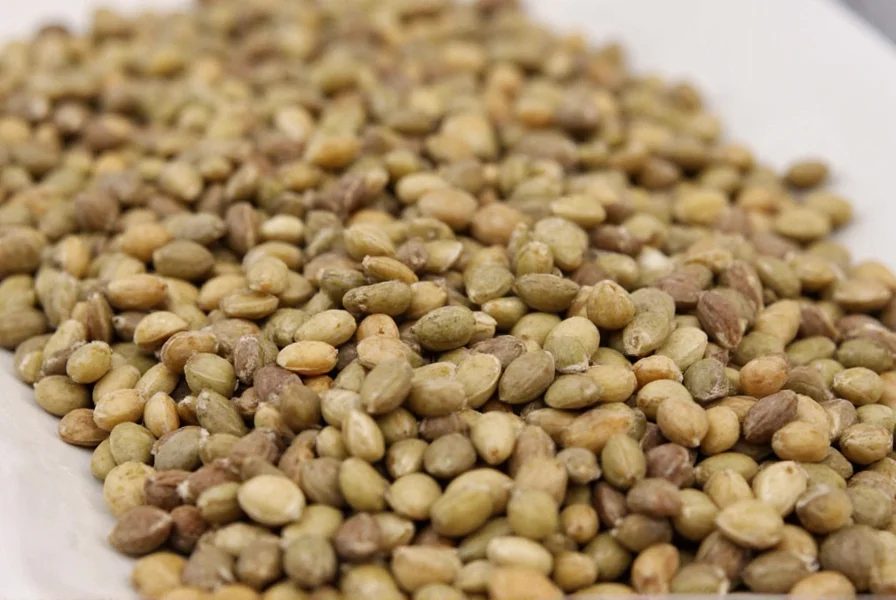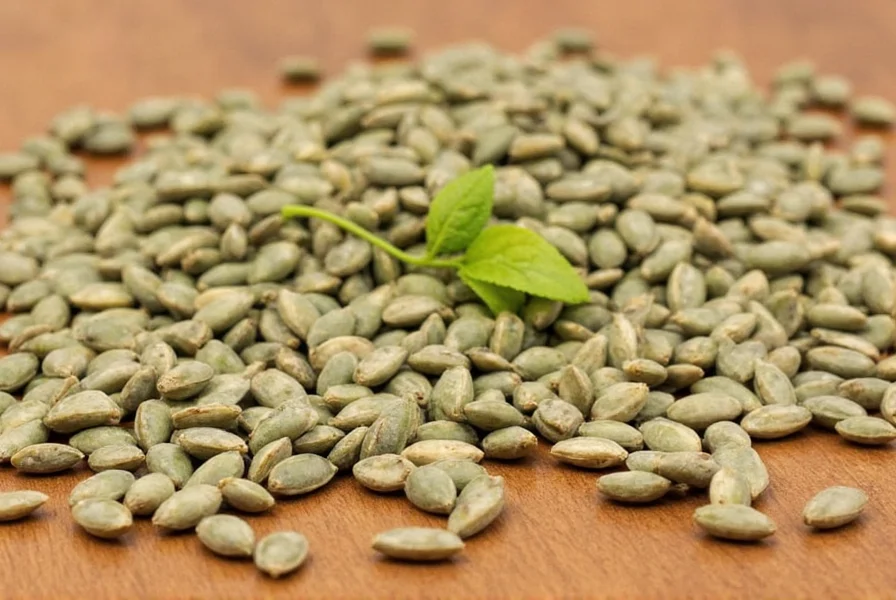Introduction to Pequin Seeds
Pequin seeds, also known as bird peppers, are small, fiery chili peppers native to Mexico and the southern United States. These tiny, teardrop-shaped pods (about half an inch long) pack a punch with a Scoville rating of 30,000–60,000 units, making them significantly hotter than jalapeños but milder than habaneros. Rich in capsaicin, vitamin C, and antioxidants, they've been used for centuries in traditional cooking and herbal remedies worldwide.
| Chili Variety | Scoville Units |
|---|---|
| Jalapeño | 2,500 – 8,000 |
| Pequin Seed | 30,000 – 60,000 |
| Habanero | 100,000 – 350,000 |
| Ghost Pepper | Over 1,000,000 |
What Exactly Are Pequin Seeds?
The term "pequin" comes from the Spanish word pequeño, meaning 'small' — and it's no exaggeration! Pequin seeds are small red or brown pods about half an inch long, often left whole or crushed for use in food.
Nutritional and Chemical Profile
- High in capsaicin (the compound responsible for heat)
- Rich in vitamin C and antioxidants
- Natural anti-inflammatory properties
How Hot Are Pequin Seeds? A Spiciness Breakdown
On the Scoville scale, which measures the spiciness of chili peppers, pequin seeds fall somewhere between 30,000 to 60,000 units. This makes them hotter than jalapeños but significantly milder than ghost peppers. They offer a balanced punch that's both flavorful and spicy — perfect for those who want to turn up the heat without going full nuclear.

Top 5 Culinary Uses for Pequin Seeds
- Salsas and Hot Sauces: Add a few crushed pequin seeds to your homemade salsa or hot sauce for a smoky, lingering heat.
- Dry Rubs: Mix ground pequin seeds with salt, garlic powder, and cumin for a bold rub on grilled meats or roasted vegetables.
- Oil Infusions: Make a fiery oil by simmering pequin seeds in olive oil. Perfect for drizzling over soups or pizzas.
- Stews and Braises: Toss whole seeds into slow-cooked dishes like mole or biryani — they'll dissolve subtly into the broth.
- Seasoned Salt: Combine finely ground pequin with sea salt for a versatile finishing sprinkle.
Pequin Seeds vs. Other Chilies: A Comparison Table
Here's how pequin seeds stack up against similar chilies in terms of heat, flavor, and usage:
| Chili Type | Flavor Profile | Heat Level | Ideal Use |
|---|---|---|---|
| Pequin Seed | Earthy, smoky, slightly fruity | Moderate-High | Sauces, oils, dry rubs |
| Guajillo | Berries, tea-like | Medium | Mole, marinades |
| Cayenne | Sharp, bright | Medium-High | Blended spice mixes |
| Thai Chili | Grassy, floral | High | Curries, stir-fries |
Buying Guide: How to Choose the Best Pequin Seeds
When shopping for pequin seeds, whether online or in a local market, here are some things to look out for:
Whole vs. Ground Pequin Seeds
- Whole seeds: Ideal for infusing oils or adding texture to sauces. Retain freshness longer when stored properly.
- Ground seeds: Convenient for seasoning blends or rubs. Check expiration dates — flavor diminishes over time.
Organic Options
Look for organic-certified products if you're avoiding pesticides. Organic pequin seeds often offer a more robust flavor profile due to better growing conditions.
Recommended Brands
| Brand | Form | Features | Best For |
|---|---|---|---|
| SpiceWorld Organics | Whole & ground | Non-GMO, USDA Organic certified | Cooking purists and gourmet chefs |
| Pure Earth Foods | Whole only | Fair-trade sourced from Mexico | Ethical buyers and conscious consumers |
| ChiliCraft Naturals | Ground | Mildly pungent, good for beginners | Home cooks and everyday meals |
Growing Your Own Pequin Plants at Home
Want to go beyond buying and start growing your own? Good news: pequin plants are surprisingly easy to cultivate — even indoors!
Growing Tips
- Use well-draining potting soil
- Provide at least 6 hours of sunlight daily
- Water regularly but avoid soggy roots
- Harvest once fully matured and reddened

Safety Tips: Handling Heat with Care
Never underestimate the power of pequin seeds. Capsaicin can cause skin irritation and eye discomfort. Always wash your hands thoroughly after handling them — or wear gloves!
Quick Safety Checklist
- Wear gloves when crushing or grinding
- Avoid touching face or eyes
- Rinse cutting boards and knives immediately after use
- Store in airtight containers away from children
Frequently Asked Questions About Pequin Seeds
How do you pronounce "pequin"?
It's pronounced "peh-KEEN" (from the Spanish "pequeño" meaning small).
Can I eat pequin seeds raw?
Yes, but be prepared for intense heat! Most people prefer using them cooked or infused to mellow the flavor slightly. Eating them raw provides the full heat experience, so proceed with caution.
Are pequin seeds the same as bird's eye chili?
No, though they're similar in size and heat. Bird's eye chili is more commonly found in Southeast Asian cuisine, while pequin is native to Mexico. Pequin tends to have a more earthy, smoky flavor profile compared to the brighter, grassier notes of bird's eye chili.
Do pequin seeds lose potency over time?
Yes, especially when exposed to air, light, and moisture. Store them in dark, airtight containers to preserve flavor and heat. Whole seeds maintain potency longer than ground seeds—typically 1-2 years for whole seeds versus 6-12 months for ground.
What's the difference between pequin and piquin (common spelling variation)?
There's no difference—it's just a spelling variation. "Pequin" is the more common spelling in English, while "piquin" reflects the original Spanish pronunciation more closely. Both refer to the same Capsicum annuum variety.
How many pequin seeds should I use in a dish?
Start with 1-2 seeds for a dish serving 4 people. Remember, the heat builds gradually, so it's better to start small and add more if needed. Remove seeds before serving if you want to reduce lingering heat.
Can I substitute pequin seeds with other chilies?
Yes, cayenne pepper or tabasco peppers make good substitutes, though they lack pequin's distinctive smoky flavor. Use half the amount of cayenne since it's slightly milder. For similar heat with different flavor notes, Thai bird chilies work well in Asian dishes.
What are the health benefits of pequin seeds?
Pequin seeds contain capsaicin, which studies suggest may support metabolism, reduce inflammation, and provide antioxidant benefits. They're particularly high in vitamin C (more than oranges by weight), but consult a healthcare professional before using them for medical purposes.
Can I grow pequin peppers from store-bought seeds?
Yes! Simply remove seeds from dried pequin peppers, plant them in well-draining soil, and keep them warm (70-85°F/21-29°C). They typically germinate in 2-3 weeks. Note that store-bought dried peppers may have been treated, so seeds from fresh peppers have higher germination rates.
Are pequin seeds and Tabasco peppers related?
Yes, both are varieties of Capsicum species (pequin is Capsicum annuum, Tabasco is Capsicum frutescens). They share similar heat levels, but Tabasco peppers have a fruitier flavor profile while pequin offers more earthy, smoky notes. Tabasco sauce actually uses a different pepper variety than pequin.
Conclusion
Whether you're jazzing up your kitchen spices or exploring new horizons in global cuisine, pequin seeds are a must-have in any chili lover's pantry. With their potent heat, complex flavor, and ease of use, they bring a whole new dimension to your cooking game.
So next time you reach for the salt or pepper, don't forget the pequin! Spice up your life — literally!










 浙公网安备
33010002000092号
浙公网安备
33010002000092号 浙B2-20120091-4
浙B2-20120091-4